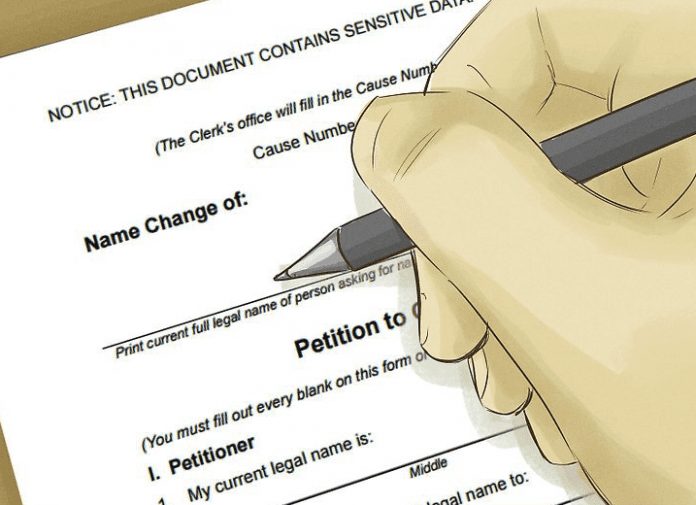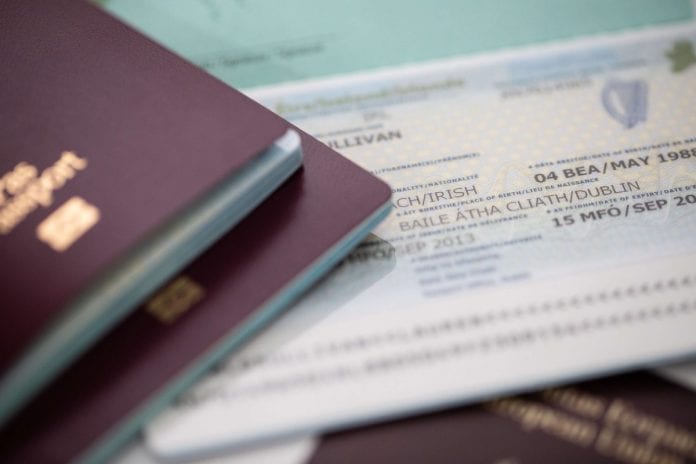When it comes to changing your last name, take the complexity out of the process with these simple tips, tricks, and things to consider.
Changing your last name

For many people, changing their name is something they consider at least once in their life. Maybe you’re getting married or divorced, maybe you’re transgender or gender non-conforming, or maybe your parents decided to name you Patrick Kirkpatrick Patrick and you’re tired of introducing yourself that way. In any case, changing your last name can be an intimidating process.
Changing your last name is in large part a matter of notifying all the appropriate parties that you intend to change your name. But laws can vary by state, and there are a few things it’s a good idea to know beforehand. Read on to learn everything you need to know about how to change your name.
You Can Name Yourself Almost Anything
Fans of the TV show Friends will know that you can change your name to almost anything. On one memorable occasion, Phoebe decides to change her name to “Princess Consuela Bananahammock.” And while we don’t advise going with a name as daring as that, if you’re getting married, there’s no reason you and your partner couldn’t become the Awesomes.
There are a few limits on what you can change your name to. You can’t use a celebrity’s name, a trademarked name, a number, or a punctuation mark. You also can’t make your name anything offensive or obscene.
Marriage and Divorce Are the Easiest Times to Change Your Name

If you’re changing your name outside of marriage and divorce, you may need a court order to do so. This is to ensure that you aren’t changing your name to evade law enforcement, skip out on debts, or commit fraud. But if you’re changing your last name after marriage, the process is much simpler.
When you fill out your marriage certificate, print your new name. Then you can take your marriage license to show to the DMV, the bank, and the Social Security Administration. During divorce proceedings, ask the judge to put your new name on your divorce decree, and you can start using that name from that point forward.
Wait for the Right Moment
You do need to be careful to make sure your legal name change has gone through before you start sending out notices. If you apply for a new passport, for instance, before your name change is complete, you could run into issues using your new name. This can also be important for credit cards; you want to make sure your good credit transfers to your new name.
Check Your Laws
The process for how to change your name varies state to state, so be sure to check on the laws in your area. In some places, you may need a court order, and in others, you may be able to just start using your new name. In many cases, it’s a good idea to get a court order one way or another to satisfy the DMV, the Social Security Administration, and other government organizations.
You may also need to advertise your new name in a newspaper before it’s official in some states. Check your state’s government website to find out what the laws are where you live.

Learn More About Changing Your Last Name
Changing your last name can be an exciting process; you’re taking on a new identity, one that is of your own choosing and, if you’re getting married, signals your bond to the most important person in your life. But you do need to be sure you get all the proper boxes checked during this process. Make sure you notify everyone who needs to know, but not until the right moment.
Alert Everyone
Once your name is officially changed, it’s time to let everyone know about your new name. This process can start with your family and friends, but you’re also going to need to notify everyone you do business with. This is where knowing updating your name can become a bit tedious.
Once you have a certified copy of a court order or marriage certificate-granting your name change you should start by notifying your local social security office about your name change (You will keep the same social security number). Once your name has been updated with the Social Security Administration, you can move on to updating your name on your passport, credit cards, vehicle title, driver’s license, and bank accounts.

You Don’t Have to Use a Lawyer
If you seek a court order to change your name, you’ll need to fill out a Petition for Name Change. You should be able to find this form online, and depending on the laws in your state, you may be able to submit it online, too. You may need to appear in court, but you won’t need to plead your case; it’s just a formality of the legal process.
Many people are under the impression that you have to hire a lawyer if you want to change your name. But even if you wind up seeking out a court order to change your name, most people are able to handle the process themselves. If you’re still feeling intimidated, name change services like UpdateMyName.com can help you navigate the process.









